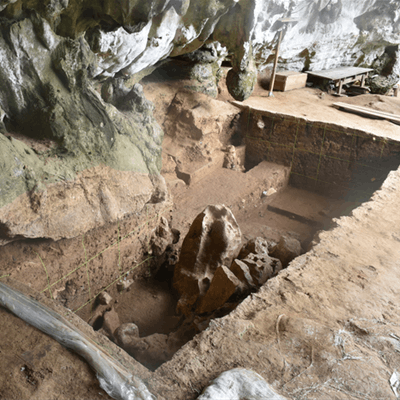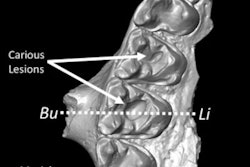
Researchers unearthed a jawbone from the Indonesian island of Sulawesi that belonged to an ancient human with a surprising dental wear pattern, according to an article published on September 29 in PLOS One.
The jawbone, which showed severe occlusal wear and related dental pathologies, belonged to an elderly person of unknown age and gender who lived 16,000 to 25,000 years ago. It represents the first Pleistocene human skeletal remains from Sulawesi, noted lead author Adam Brumm, PhD, from Griffith University in Brisbane, Australia, and colleagues.
 An excavated trench at Leang Bulu Bettue. Image courtesy of Brumm et al. Licensed under CC BY 4.0.
An excavated trench at Leang Bulu Bettue. Image courtesy of Brumm et al. Licensed under CC BY 4.0.The individual experienced poor oral health, the authors surmised. The person had only molars remaining, and the teeth showed moderate to extensive interproximal inflammation, which they interpreted as the effects of periodontal disease.
Only the second molar had a normal occlusal plane. The first molar's wear plane sloped strongly upward from the distal to the mesial margin, while the wear plane on the third molar sloped upward from the mesial to the distal margin. The findings indicate the third molar may have been used as a tool, they wrote.
The person may have dragged palm fronds up the molar surface to produce twine, for example. A thin, clear groove running from the mesiolingual to the bucco-distal surface of the tooth suggests the possibility of such nondietary activities, the authors wrote.
The specimen "provides us with the first direct fossil insight into the identity of these ancient foragers, and its unusual tooth wear and oral pathology offer tantalizing hints on how they adapted to their rainforest environment," the group concluded.




















